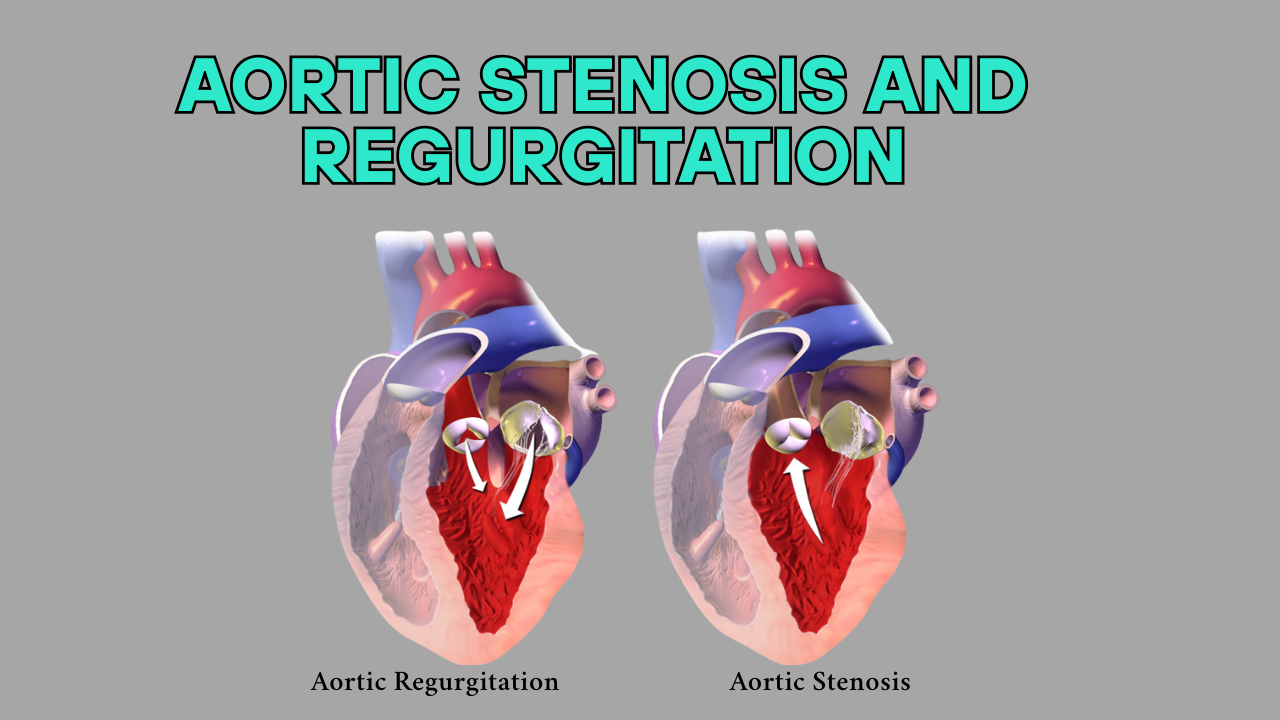- everything you need to know about -
Aortic Stenosis & Regurgitation
watch a
video

- HEALTH & WELLNESS-
Aortic Stenosis
& Regurgitation
Heart disease isn’t always about heart attacks. Sometimes, it’s about valves — tiny but crucial parts of your heart that keep blood flowing in the right direction. Two common valve problems that often go unnoticed until they become serious are aortic stenosis and aortic regurgitation.
In this post, we’ll help you understand what these conditions are, how they differ, what signs to watch for, and how they’re treated. Whether you’re looking for information for yourself or a loved one, this guide simplifies complex heart terms so you can take informed action.
🫁 What Is the Aortic Valve and Why Does It Matter?
Your heart has four valves, and the aortic valve is one of the most important. It controls blood flow from the heart to the rest of the body. When this valve doesn’t work properly, your body may not get enough oxygen-rich blood — and that can affect everything from your energy levels to your long-term health.
🔍 What Is Aortic Stenosis?
Aortic stenosis happens when the aortic valve becomes narrow or stiff. This forces the heart to work harder to pump blood through a smaller opening. Over time, this added strain can lead to heart failure or other serious complications.
✅ Common causes:
Age-related valve calcification
Congenital heart defects (like a bicuspid valve)
Rheumatic fever
Radiation therapy to the chest
🚨 Common symptoms:
Chest tightness or pain (especially during activity)
Shortness of breath
Dizziness or fainting
Fatigue
Heart murmur (often detected by a doctor)
Often, people don’t notice symptoms until the condition is advanced. That’s why regular check-ups matter — especially for those over age 60.
🔁 What Is Aortic Regurgitation?
In contrast, aortic regurgitation (also called aortic insufficiency) occurs when the aortic valve doesn’t close properly. This allows some blood to flow backward into the heart, forcing it to pump harder to keep blood moving forward.
✅ Causes may include:
Valve damage from infection (endocarditis)
High blood pressure
Congenital valve issues
Connective tissue disorders (like Marfan syndrome)
🚨 Signs and symptoms:
Fluttering or pounding heartbeat (palpitations)
Fatigue, especially during physical activity
Shortness of breath while lying down or sleeping
Swollen ankles and feet
A sensation of chest discomfort or skipped beats
Symptoms may come on slowly or quickly, depending on the cause and severity.
🧪 How Are These Valve Problems Diagnosed?
A healthcare provider may suspect a valve issue based on a physical exam and listening to your heart. To confirm, they’ll usually recommend:
Echocardiogram (heart ultrasound)
Electrocardiogram (ECG)
Chest X-ray
CT scan or MRI
Stress test (to see how your heart performs during exercise)
These non-invasive tests help doctors assess how well the valve is functioning and guide treatment decisions.
💊 Treatment Options: From Monitoring to Surgery
Mild or Early-Stage:
No immediate treatment may be needed
Regular monitoring with annual check-ups
Lifestyle changes (heart-healthy diet, managing blood pressure)
Moderate to Severe:
Medications may be prescribed to ease symptoms or control blood pressure
Valve repair or replacement is often necessary in advanced cases
There are two common types of valve replacement:
Surgical Aortic Valve Replacement (SAVR) – traditional open-heart surgery
Transcatheter Aortic Valve Replacement (TAVR) – a less invasive option, often for high-risk patients
Discuss options with your cardiologist to choose the best approach based on age, overall health, and valve condition.
💡 Living with Aortic Valve Disease
Managing aortic stenosis or regurgitation means staying informed and proactive:
Keep all follow-up appointments
Take medications as prescribed
Track symptoms and alert your doctor to any changes
Follow a heart-healthy lifestyle (low sodium, active, no smoking)
It’s also a good idea to ask your doctor about endocarditis prevention, especially before dental procedures or surgeries.
🔚 Final Thoughts
Aortic valve disease doesn’t always shout — sometimes, it whispers. Whether it’s aortic stenosis, where the valve is too narrow, or aortic regurgitation, where the valve is too loose, early detection and regular care can make a life-changing difference.
You don’t have to be a heart expert to protect your health — you just have to listen to your body and ask the right questions.
If you or someone you love has been diagnosed with a heart valve condition, know that you’re not alone. With the right care, many people go on to live full, active lives.
